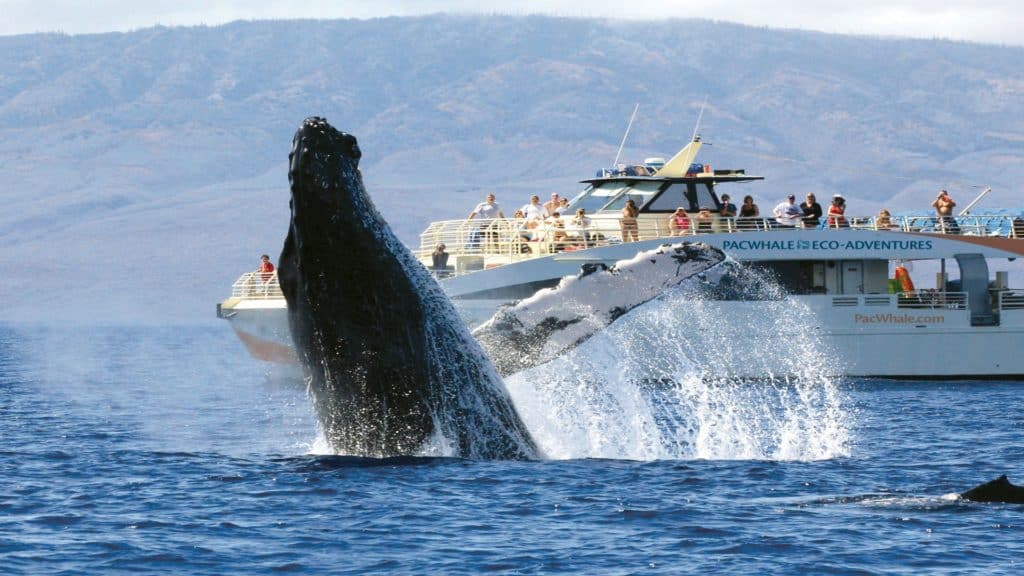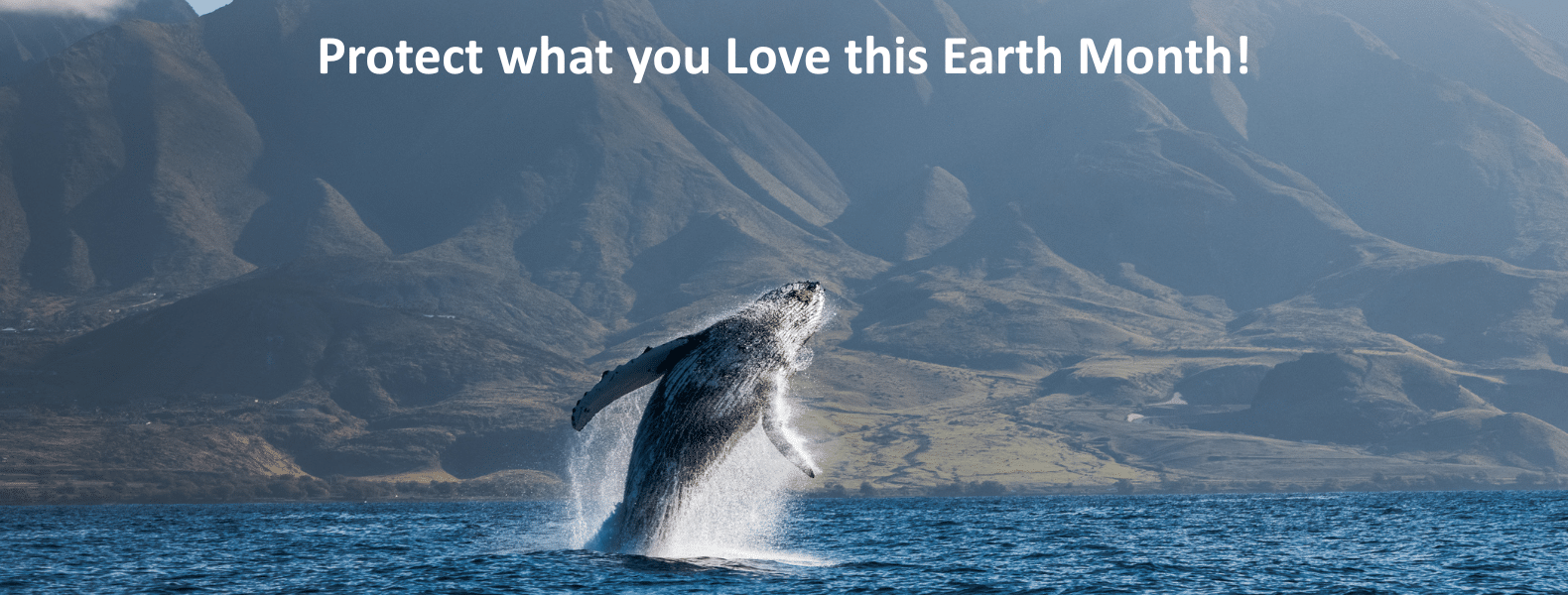Research activities conducted under NMFS research permit #21321 and the UAV operator holds an unmanned aerial system (UAS) license certified by the Federal Aviation Administration.
Drones are more popular than ever, and it is no surprise due to their increase in affordability and breathtaking aerial views that can be captured. One of the greatest thrills might be capturing footage of wildlife in its natural habitat. With the abundance of humpback whales Maui enjoys in the winter months, their close proximity to shorelines and their acrobatic behaviors, they are often a highly sought-out target for drone operators. However, extra precautions must be taken when viewing wildlife from the air or water to ensure minimal disturbance with all activities involving humpback whales. What are the rules and regulations you should use around these majestic marine mammals and other marine life?
Rules are different in other countries; some have strict drone laws, like Australia, and others have none yet, such as Ecuador. For those of us in Hawaii and the rest of the U.S., there are four different pieces of legislation at play:
- The Marine Mammal Protection Act
- The Endangered Species Act
- Federal Aviation Administration rules for drone operation
- Legal approach distance (specific to humpback whales in the Hawaii population)
Marine Mammal Protection Act (MMPA) 1
Congress passed the Marine Mammal Protection Act in 1972 in response to increasing concerns among scientists and the public that significant declines in some species of marine mammals were caused by human activities. The MMPA established a national policy to prevent marine mammal species and population stocks from declining beyond the point where they ceased to be significant functioning elements of the ecosystems of which they are a part. This was the first legislation to mandate an ecosystem-based approach to marine resource management. All marine mammals are protected from “take” under the MMPA. The MMPA defines take to mean: “to harass, capture, or kill” any marine mammal or attempt to do so. Harassment is further defined as any act of pursuit, tormentor annoyance that has the potential to do the following:
- Level A harassment — injure a marine mammal or marine mammal stock in the wild.
- Level B harassment — disturb a marine mammal or marine stock in the wild by causing disruption of behavioral patterns, including, but not limited to, migration, breathing, nursing, breeding, feeding or sheltering.
Three federal entities share responsibility for implementing the MMPA:
- NOAA Fisheries — responsible for the protection of whales, dolphins, porpoises, seals and sea lions.
- U.S. Fish and Wildlife Service — responsible for the protection of walrus, manatees, sea otters and polar bears.
- Marine Mammal Commission — provides independent, science-based oversight of domestic and international policies and actions of federal agencies addressing human impacts on marine mammals and their ecosystems.
MMPA rules specific to viewing from the air 2
- Do not approach humpback whales in Hawaii using unmanned aircraft, such as drones, closer than 100 yards or 300 feet. 3
- Avoid buzzing, hovering, landing, taking off, and taxiing near marine mammals on land or in the water. These activities are likely to harass the animals and cause stress.
- Avoid flying drones, or unmanned aircraft systems (UAS), near animals. The noise and close proximity of drones can harass the animals and cause stress.
- Federal law requires manned aircraft, like helicopters and planes, to fly no lower than 1,000 feet above humpback whales in Hawaii and 1,500 feet above North Atlantic right whales throughout U.S. waters.
Endangered Species Act (ESA) 4
Congress passed the Endangered Species Act in 1973, recognizing that the natural heritage of the United States was of “esthetic, ecological, educational, recreational and scientific value to our nation and its people.” It was understood that, without protection, many of our nation’s native plants and animals would become extinct.
Under the ESA, the federal government has the responsibility to protect:
- Endangered species — species that are in danger of extinction throughout all or a significant portion of their range.
- Threatened species — species that are likely to become endangered in the foreseeable future.
- Critical habitat
Marine mammals in Hawaii that are protected by the ESA in addition to the MMPA include the main Hawaiian Islands insular false killer whale, green sea turtle or honu , hawksbill turtle and Hawaiian monk seal.
Federal Aviation Administration (FAA) rules for drone operation 5
Federal Aviation Regulations prohibit the unsafe or unauthorized operation of an aircraft, including drones. Unsafe operations may result in substantial civil penalties and possible action against an operator’s FAA-issued certificate or may be subject to criminal response by law enforcement in accordance with local laws and ordinances.
- Register your drone (all drones over .55 lbs. must be registered)
- Fly your drone at or below 400 feet
- Keep your drone within your line of sight
- Be aware of FAA Airspace Restrictions
- Respect privacy
- Never fly near other aircraft, especially near airports
- Never fly over groups of people, public events or stadiums full of people unless you have permission
- Never fly near emergencies such as fires or hurricane recovery efforts
- Never fly under the influence of drugs or alcohol
Legal Approach Distance
The legal approach distance for unmanned aircraft, such as drones, is 100 yards or 300 feet for humpback whales in Hawaii. Although, the legal approach distance for other marine mammals and in other states has not yet been established, this does not mean that it is safe to fly your drone around marine mammals. Due to the FAA rule that requires drones to fly below 133 yards/400 feet, if you fly your drone above a marine mammal you could potentially be harassing the animal and be in violation of the MMPA and ESA for protected species. Pacific Whale Foundation (PWF) recommends taking the precautionary approach; if you spot a marine mammal or sea turtle while operating your drone, do not linger above or follow the animal.
Special Drone Permits
PWF and other research organizations can obtain federal research permits to use drones over specific species, like whales and dolphins, which requires the completion of FAA certification and getting a Part 107 pilot’s license through a two-week training course including an in-person exam to ensure drone footage is taken safely and properly. PWF currently uses drones to study the endangered Main Hawaiian Islands insular population of false killer whales. We also partner with the University of Hawaii’s Marine Mammal Research Program and Hilo Marine Mammal Laboratory to use drones to quantify the bioenergetic demands of humpback whale migration between Alaskan feeding and Hawaiian breeding grounds as they face climate change and shifting prey availability. Watch our Research webinar below to learn more about how we use drones in our research work.
Maui Whale Festival: Research Webinar from Pacific Whale Foundation on Vimeo.
These permits are issued to professionals with proper training in order to learn more about various marine species so we can understand what needs to be done to better protect them, unlike capturing footage for personal enjoyment, which has no benefit for the species. Professional photographers and filmmakers can also obtain limited time-frame permits to film certain species in order to educate the public. We ask that you use these sources or follow research organizations like PWF to view aerial footage of marine mammals instead of capturing it yourself.
Although getting footage of these amazing animals is exciting and awe-inspiring, these rules and recommendations are there to reduce harassment for their protection and, in a way, for our own benefit so we can continue to enjoy them for years to come. Mahalo for taking the time to better understand this topic and how we can all do our part to protect the wildlife we all love and care for. Enjoy this video highlighting our use of drones and photography to study false killer whales.
Field Research – Hawaii from Pacific Whale Foundation on Vimeo.
Sources
- NOAA https://www.fisheries.noaa.gov/topic/laws-policies#marine-mammal-protection-act
- NOAA https://www.fisheries.noaa.gov/topic/marine-life-viewing-guidelines#guidelines-&-distances
- Federal Register https://www.federalregister.gov/documents/2016/09/08/2016-21277/approach-regulations-for-humpback-whales-in-waters-surrounding-the-islands-of-hawaii-under-the
- NOAA https://www.fisheries.noaa.gov/topic/laws-policies#endangered-species-act
- FAA https://www.faa.gov/uas/getting_started/


